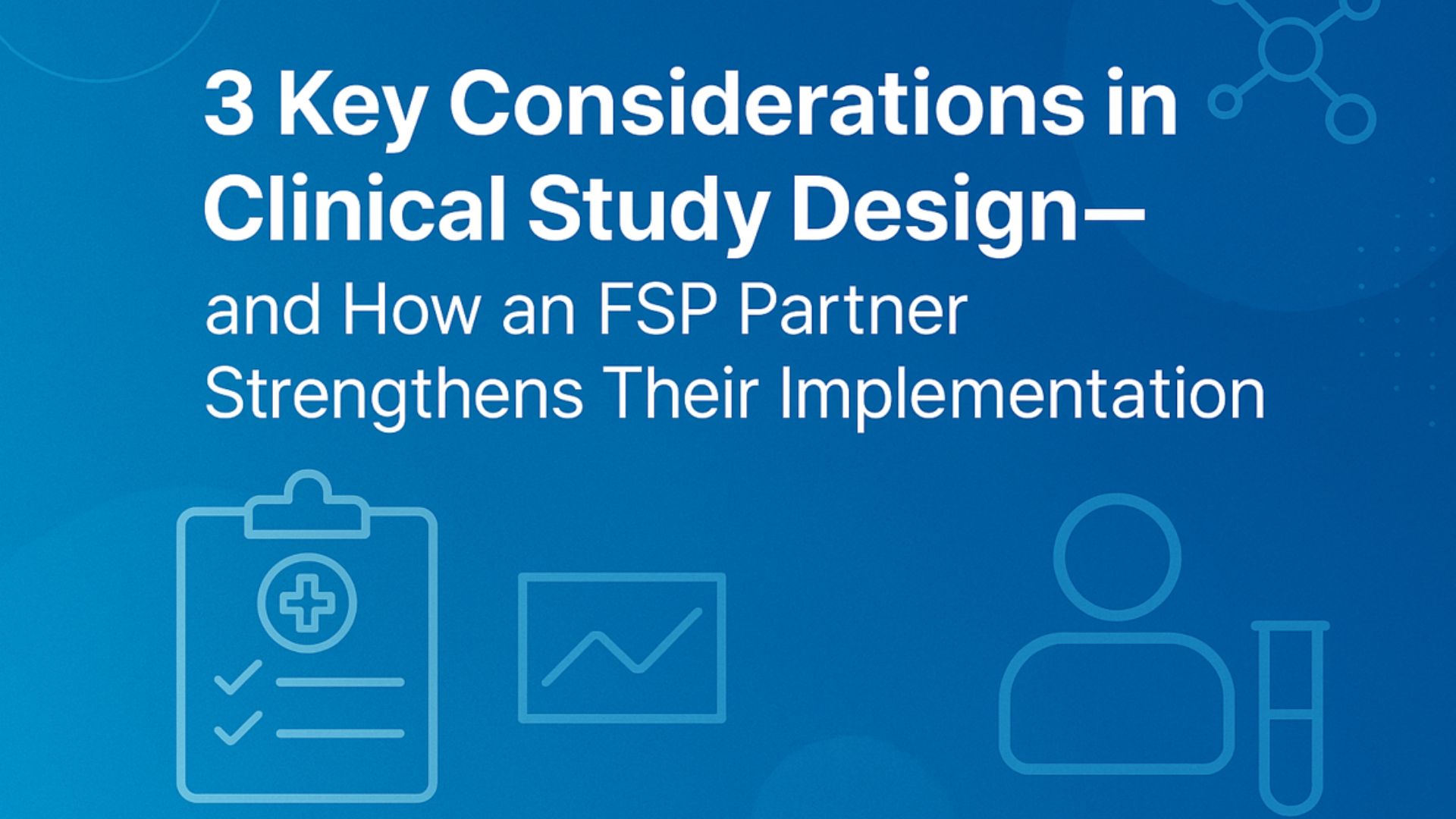By: ABRS- Academic Team

Introduction
In recent years, clinical research has slowly shifted from viewing participants as passive “subjects” to recognizing them as essential partners in the trial journey. That mindset shift matters: a positive participant experience supports better retention, protocol adherence, and data reliability. Conversely, burdensome procedures, poor communication, or cultural insensitivity are among the leading causes of dropout before trial completion.
Designing a trial that safeguards patients, aligns with evolving regulations, and ensures data integrity is a tall order. But with the right Functional Service Provider (FSP) partner, you can embed operational resilience into each design phase. Here are three key considerations and how an FSP like ABRS can help you deliver a study that is robust, compliant, and patient-centric.
1. Safeguarding Patient Safety from Day Zero
Patient safety must be more than a checkbox — it should be a cornerstone of study design and execution. If risk isn’t thoughtfully anticipated, downstream consequences like adverse event spikes, protocol amendments, or regulatory scrutiny can derail timelines and reputation.
The soon-to-be finalized ICH E6 (R3) guideline reinforces this shift toward quality by design, pushing sponsors to identify critical-to-quality (CtQ) factors and embed risk mitigation early. The guideline underscores that trial processes should be proportionate to the risks and focused on the reliability of both safety and efficacy data.
Beyond theory, practical evidence shows how participant burden affects retention. A study in JAMA Oncology observed that clear communication, flexible scheduling, and proactive support reduce consent withdrawals—especially when logistical or comprehension challenges arise. Meanwhile, researchers working in pragmatic trials note that engaging patients as partners helps ensure protocols answer questions that matter to them, reducing unnecessary burden.
FSP contribution in patient safety:
Co-designing safety strategies. An FSP can lead a risk assessment workshop with sponsors and investigators to identify CtQ parameters (e.g. endpoints, safety signals, monitoring triggers). This ensures safety is baked into the protocol rather than retrofitted.
Centralized safety surveillance. The FSP can deploy central monitoring systems (signal detection, trend analysis) to spot emerging patterns across sites and advise early mitigation.
Standardized training and oversight. With experience across geographies, an FSP ensures consistent training in adverse event reporting, ensures prompt implementation of safety escalations, and monitors adherence to stopping rules or Data Monitoring Committees (DMCs).
By positioning safety as a design priority and not just a regulatory requirement, the FSP helps prevent costly amendments and supports a smoother, more defensible trial path.
2. Aligning Design with Global Regulatory Expectations

In global trials, protocol designs must navigate the intersections of FDA, EMA, ICH, and regional authorities. Inconsistent expectations across jurisdictions can force costly redesigns or rejections post-submission.
The finalized ICH E6 (R3) guidance, effective in 2025, expands content on data governance, quality by design, and proportionality — signaling that regulators increasingly expect studies to be built on transparent, risk-based frameworks. The revised framework emphasizes that deviations or flexibility must be justified in the protocol, and that trial complexity should be matched to risk.
Regulatory commentary also notes that the E6 (R3) revision enhances the importance of clearly defined roles, delegate oversight, and accountability — which affects how sponsors outsource or partner with service providers. Vita Global Sciences+1
FSP contribution in regulatory alignment:
Protocol harmonization and local adaptation. An FSP with global regulatory experience can help sponsors anticipate divergent authority expectations, build optional appendices or modules per region, and maintain a single “core” protocol that maximizes regulatory acceptability.
Regulatory gap assessments and readiness. The FSP can run a mock review of your protocol against FDA, EMA, and local authority expectations, flag risks, and advise on enhancements before submission.
Delegation and oversight governance. As regulatory pressure on delegation increases under E6 (R3), the FSP ensures that delegation logs, service level agreements (SLAs), and oversight frameworks are robust, auditable, and aligned with the sponsor’s accountability.
In effect, the FSP serves as a bridge between global regulatory ambition and local execution feasibility, reducing the risk of costly redesigns or disapprovals.
3. Ensuring Data Integrity Through Thoughtful Data Management
All the safety and regulatory rigor in the world fails if the data are unreliable. With more trials adopting decentralized, hybrid, or technology-enabled designs, data management must be proactive, not retrospective.
ICH E6 (R3) places expanded emphasis on data governance, traceability, and security, compelling sponsors to ensure that systems and processes across the data life cycle are fit for purpose. The guideline underscores that new technologies and computer systems should support critical trial functions (like randomization, blinding, audit trails) in a validated and proportionate manner.
Practically, data management innovations have shown strong promise. For example, digital trial models that integrate ePROs, wearable sensors, and automated reminders have been linked to increased adherence and reduced missing data. There is growing recognition that the patient-facing data experience (e.g. usability, transparency) can itself influence retention and data quality.
FSP contribution in data management:
Selecting and validating systems. The FSP can evaluate and recommend EDC, CTMS, and integration platforms, ensuring they meet GCP, Part 11 (or local analogs), and support interoperable workflows.
Governance and metadata frameworks. An FSP defines data standards, version control, audit logs, data lineage, and access permissions to maintain traceability and compliance across modules.
Real-time oversight, analytics & risk-based monitoring. Through dashboards, anomaly detection, and centralized monitoring, the FSP can flag issues (e.g. site outliers, missingness, protocol deviations) early, coordinate corrective actions, and support quality oversight.
With the FSP taking responsibility for the end-to-end data ecosystem, the sponsor can remain confident the data will hold up under regulatory and scientific scrutiny.
Conclusion:
When the stakes are high — patient safety, regulatory compliance, data credibility — ad hoc outsourcing is risky. Engaging a seasoned FSP at the design phase enables you to embed operational excellence, anticipate pitfalls, and optimize across dimensions.
An FSP partner can serve as your internal integrator:
Translating regulatory nuance into practical operational steps
Embedding risk-based thinking across safety and data
Ensuring consistent execution across sites and geographies
Preserving accountability while delegating execution regulatory defensibility.
At ABRS, our Functional Service Provider (FSP) model is built on this very principle: combining specialized expertise with adaptive oversight to help sponsors design studies that are compliant, efficient, and patient-centric from the outset. By collaborating early in the design phase, ABRS teams help sponsors transform complexity into clarity—strengthening regulatory readiness and driving data integrity that stands up to global scrutiny.
